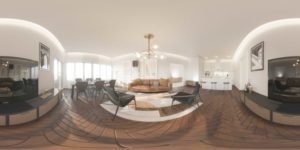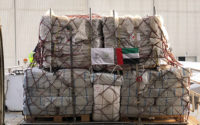Top 20 Tips For Shooting Perfect Panoramas
Panoramas are an excellent way to photograph landscapes. It is easy to represent what you want to see through your eyes in your photos by allowing you to catch a greater portion of the sight in front of you. While software has made stitching your images into panoramas ridiculously simple, there are some adjustments you can create to get as much out of your scenery and create better panoramas. A panoramic picture represents a visual field that is far larger than what can be filmed in a single exposure, telling a more nuanced tale and bringing the audience closer to the experience of being there.
Essential Equipment: First, a tripod with a bubble stage built in. Then you’ll need a battery grip for your tripod then you can rotate your camera effortlessly and precisely to capture the parts of the scene that the software can put together to shape the larger picture. The first and most critical move is to adjust the tripod. After that, add and scale your camera. Virtual Horizon is a feature on many Nikon DSLRs that will direct you to the absolute best for you.
For most panoramas, it’s better to film with your camera placed vertically on a tripod; this way, you’ll have more than enough space to work with.
Although panoramas such as the one above is fantastic, there’s a few innovative ways to use them. Here are some innovative panorama photography ideas.
- Completing the Composition
The key objective of a panoramic photograph is how you see the subject.
This is not so much what you’ve been doing as that’s how you’re doing it in panoramic pictures. That is to say, a panoramic picture does not have to be a wide-angle shot of anything. Even if you have a fisheye lens and can see the whole length of a mountain ridge, it isn’t a panoramic photograph. The technology’s vague meaning is that the image’s volume fraction must be at least half as important as its size.
- Make the Most of The Panoramic Mode
When you switch on certain wide-angle cameras, the last wide-angle photo you took is shown first, followed by a live view of the scene at the front of the camera. To line up and align photos, this organized series of photographs is needed. Panorama mode allows for this kind of stacking.
This mode also keeps the exposure settings consistent between shots. This ensures even illumination and allows stitching a breeze.
- Take it for a spin.
Contain the following elements of your panoramic view before you start shooting to save yourself a zillion retake. Reenact your panorama, but don’t push the shutter button. Instead, keep an eye as to what you’re observing as you walk. This will assist you in determining the start and end points for your photograph, as well as determining whether or not this will be any troublesome elements in the frame.
When you’re prepared to attack, use your phone to monitor the progress of your panorama as you move. Panoramas put your photos together, whilst you’re shooting, the recent photo and a glimpse of the next one will emerge. It’s important to note that the broader the shot, the more inclined your panorama will look.
- Tripod head with a panoramic view.
If you have a tripod head that can transform in calculated intervals, clip your lens to the tripod instead of your camera’s view.
This is an additional piece of equipment, but if you intend on doing panoramas regularly, ensure your tripod has a panoramic head. These head rotate around the camera’s central line, reducing interference in the final picture.
Panoramic heads are often labelled with percentages ranging from 0 to 360 degrees, enabling you to make precise cinematic sequences. There are several decent panoramic tripod heads on the market, and you can find in the same budget range as other types of heads.
- Become more comfortable with your movements.
You should be order to function your camera and tripod before thinking about them if you want to be easy. In reality, muscle awareness should be embedded in these gestures. Plenty of preparation is needed. When it’s not time to shoot, test your camera and tripod gestures. Making the time to set living in a small setting has been one of the effective methods to get the training. So, even if your practice photos are bad, you won’t have skipped any worthwhile shots. It might be as simple as finding into your field for an hour.
- Shoot in RAW mode.
It’s preferable to shoot in RAW rather than JPEG format for the best results.
In terms of film cameras, RAW images are the internet version of negatives. There is no image compression, and no image modifications are made, except for the JPEG format (such as sharpening or changes to color saturation, etc.).
In post-production, RAW offers you many more choices for working with the files. Besides that, Lightroom Classic CC and Lightroom 6 are equally at ease combining RAW and JPEG images into a scenic picture. In reality, if you use RAW images, the panoramic picture you get would be a RAW image as well.
- Lenses that are longer
When producing panoramas, use longer focal lengths rather than wide-angle lenses. Depending on the scene in front of you, 35mm, 50mm, and 85mm are all viable options. Unlike wide-angle lenses, which drive anything backward in the picture, larger focal lengths enable for a different point of view by moving everything along in the frame.
You’ll always get a broad view of your shot with the sky and surroundings preserved because you’re shooting in panorama mode and putting together multiple photos.
- Turn off Auto Focus.
Let’s start by discussing how to take panoramas with your digital camera. As you pan around your subject, use portrait orientation and take multiple images. Make sure each photo intersects by at least 20% with the previous one; your photo-editing software would need the space to correctly combine the images around.
Now it’s time to get back to work. It’s important to turn off auto focus when taking numerous images so you don’t end up with various key elements in the center of your panorama. If you’re having a panorama of a house, for example, and the building is in the middle of the picture, there could be a tree in front of it. If your camera is focused to infinity for every picture except the frame with the tree the panorama will end up with a different focal plane in the middle of the shot.
- In Aperture Focus Mode, Take Tests Shots
To capture the images that will make up your panoramic picture, you’ll use Manual Mode. But first, turn to Aperture Priority mode, adjust the aperture to f/11, and take a practice run of the brighter part of the scene to support you determine the correct primary aspect. Make sure the foreground and background of the test shot are both sharp. If it still doesn’t work, try can your aperture to f/16 and taking another test shot.
Make sure your test picture doesn’t have any blown highlights. That is to say, areas with a lot of bright white. Blown highlights are also indicated by flashing on the camera’s screen.
- Exposure was done by hand.
Set your camera to Manual mode for the length of your sequence for the best performance. It’s possible that the app won’t be able to combine your panorama if your exposures don’t fit from frame to frame.If your scene is simple and contains few components, you might be able to get away with using Aperture Priority mode. If one portion of your image has a mountain or a building and then the other half has a clear blue sky, the difference in exposures can result in photos that are unusable for panorama merging.
- Select the Required White Balance Mode
The white balance of your camera determines how warm or cold the shades in the scene are interpreted.It’s critical not to let the camera determine whether the shades are warm or cold, as it will almost certainly select a higher impact for each picture you take. As a result, each photo will appear slightly different, and photo blending software will fail to accurately combine the images for the final panoramic image.
White balance presets are available on your camera. To change the white balance on your camera, consult the user guide that came with it.
- Create Better Panoramas: A wide shot of a forest path
Focus two-thirds of the way, switched to manual focus and reframed the camera to begin at the left in this shot.
Setting your attention already in the first frame of your series seems to be a simple task when concentrating. If you’re concentrating to infinity, that’s fine; if you’re focusing on anything closer to you, your focal point might not make it into the final harvest. It takes a little longer and you have to be cautious not to shake the frame, but try focusing on the image’s central focal point. After that, change to manual focusing and recenter the camera to its original position.
- Panoramas by Season
These work especially well in wooded areas where the seasons are evident. Take four separate panoramic views in the very same location: one in the summer, autumn, winter, and spring. It will cost you a year to collect all of your photographs, but once you do, you will be able to merge them into a truly beautiful picture depicting the changing of the seasons that will look great on any wall.
- Panoramas of 360 degrees
Try taking a 360-degree panorama with something a little different. You can purchase devices that do this, or some cameras come with built-in 360°/180° panorama settings. If your camera doesn’t even have a 360-degree panorama mode, don’t worry; you can stitch multiple panoramas together again to achieve the same effect.
- Use a person as an object.
A panorama is an amusing way to capture a group portrait whether you’re out with a group of mates or at a social event. A panorama is a great concept to include everyone in a picture with ease, whether it be at a picnic or just a social affair at someone’s home. To make a picture that is more interesting and enjoyable, experiment with different poses and gestures. Many cameras already have panorama features built in, making it easier to create good panoramas by simply keeping the shutter button when panning the camera throughout. Small convertibles can also fit into pockets and bags, so they won’t take up too much room if you’re out and about.
- Take many photos and overlap them by at least 30 percent.
Each photo you take must have a large overlap for the photo merging software to work. This is required for the images to be matched and aligned. When taking panoramic images, strive for a one-third overlap or around 30% overlap.
- Be fast.
There’s a risk that objects in your scene will shift because you’re taking several photos for each panorama. Water and clouds can cause a lot of problems during the stitching process. You can mitigate this to some extent by being fast. Your hands really should be rotating to move the camera to the next location after your first shot is completed.
- The Content of Your Scene is The Beginning of Good Panoramic Photography
Not all topics lend itself well to panoramic photography. A short round tree, for example, isn’t exactly a great panoramic topic. A large group of friends or family, a longship, a big beach scene, or a stunning landscape can all be used to create panoramic pictures.
Understand the context of your scene and decide how each aspect contributes to your final picture. This will assist you in deciding what to include (and exclude) from the scenario before taking your photograph.
- Make use of your GND filters.
Use your GND plugins to your heart’s content while making panoramas. Similarly, you can play around with graduated neutral density filters as much as you like. If you’ve a difficult horizon line, such as a mountain pass, simply shift your sensor into the proper position between shots. This will work perfectly as long as you are cautious not to switch your camera.
- With stickers and effects, you can add some extra wow to your project.
The best thing about editing panoramas is how much more space there is to play with! Stickers add whimsy to every project (arrows are fun for calling out easy-to-miss details in your pic). With long frames, paint-on photo effects are also ridiculously amusing. Try using different colors of Ombre or Tint on various parts of your image, or go part black and white.









